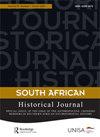高等管理区护理教育的变化趋势:以斯威士兰安斯沃斯·迪克森护士培训学校为例,1948–1967年
IF 1
3区 历史学
Q1 HISTORY
引用次数: 0
摘要
本文章由计算机程序翻译,如有差异,请以英文原文为准。
Shifting Trends in Nursing Education in High Commission Territories: The Case of Ainsworth Dickson Nurse Training School in Swaziland, 1948–1967
ABSTRACT In 1948, the High Commission territories (HCTs) of Bechuanaland, Basutoland, and Swaziland (present-day Botswana, Lesotho, and Eswatini, respectively) formed an inter-territorial nursing council responsible for accrediting nursing schools and nurse registration. This article focuses on the Ainsworth Dickson Nurse Training School in Swaziland that was under the council’s charge. The article argues that the medical personnel and epidemiological conditions in Swaziland before 1948 informed and shaped the development of the education of nurses afterwards, during the last two decades of colonial rule. Accredited nurse education led to a gradual emergence of fully trained nurses with the same kind of training as that required for the nurse certificate issued by the neighbouring South African Nursing Council. The article examines the origins of Swaziland’s public health problems and traces the evolution of accredited nursing in relation to these problems. It illuminates the shifts that occurred in the development of nurse education programmes and analyses these shifts in relation to the historical context of the time. It demonstrates how epidemiological, historical, political, and economic context of the time led to a collapse of the racial barriers in nursing so that African nurses could dispense biomedical services even to European patients.
求助全文
通过发布文献求助,成功后即可免费获取论文全文。
去求助
来源期刊

South African Historical Journal
Multiple-
CiteScore
0.70
自引率
0.00%
发文量
37
期刊介绍:
Over the past 40 years, the South African Historical Journal has become renowned and internationally regarded as a premier history journal published in South Africa, promoting significant historical scholarship on the country as well as the southern African region. The journal, which is linked to the Southern African Historical Society, has provided a high-quality medium for original thinking about South African history and has thus shaped - and continues to contribute towards defining - the historiography of the region.
 求助内容:
求助内容: 应助结果提醒方式:
应助结果提醒方式:


